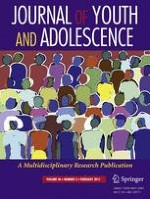02-05-2016 | Empirical Research
The Dark Side of Internet Use: Two Longitudinal Studies of Excessive Internet Use, Depressive Symptoms, School Burnout and Engagement Among Finnish Early and Late Adolescents
Gepubliceerd in: Journal of Youth and Adolescence | Uitgave 2/2017
Log in om toegang te krijgenAbstract
Recent research shows an increased concern with well-being at school and potential problems associated with students’ use of socio-digital technologies, i.e., the mobile devices, computers, social media, and the Internet. Simultaneously with supporting creative social activities, socio-digital participation may also lead to compulsive and addictive behavioral patterns affecting both general and school-related mental health problems. Using two longitudinal data waves gathered among 1702 (53 % female) early (age 12–14) and 1636 (64 % female) late (age 16–18) Finnish adolescents, we examined cross-lagged paths between excessive internet use, school engagement and burnout, and depressive symptoms. Structural equation modeling revealed reciprocal cross-lagged paths between excessive internet use and school burnout among both adolescent groups: school burnout predicted later excessive internet use and excessive internet use predicted later school burnout. Reciprocal paths between school burnout and depressive symptoms were also found. Girls typically suffered more than boys from depressive symptoms and, in late adolescence, school burnout. Boys, in turn, more typically suffered from excessive internet use. These results show that, among adolescents, excessive internet use can be a cause of school burnout that can later spill over to depressive symptoms.
